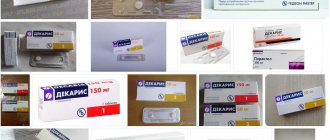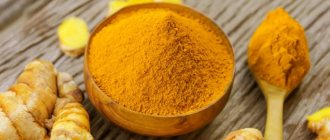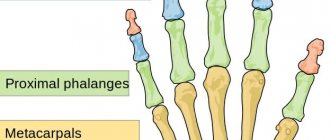Levamisole
| Clinical data | |
| Trade names | Ergamizole |
| AHFS/Drugs.com | Detailed information for Micromedex consumers |
| MedlinePlus | a697011 |
| License data |
|
| Routes administration | Orally |
| ATC code |
|
| Legal status | |
| Legal status |
|
| Pharmacokinetic data | |
| Metabolism | Liver |
| Elimination of half-life | 3–4 hours |
| Excretion | Urine (70%) |
| Identifiers | |
IUPAC name
| |
| Number of CAS |
|
| PubChem C.I.D. |
|
| IUPHAR/BPS |
|
| DrugBank |
|
| ChemSpider |
|
| UNII |
|
| KEGG |
|
| CHEBY |
|
| CHAMBL |
|
| CompTox Control Panel (EPA) |
|
| ECHA InfoCard | 100.035.290 |
| Chemical and physical data | |
| Formula | C11H12N2S |
| Molar mass | 204.29 g mol−1 |
| 3D model (JSmol) |
|
| Density | 1.31 g/cm3 |
| Melting temperature | 60°C (140°F) |
Smiles
| |
InCHI
| |
| NY (what is this?) (check) | |
Levamisole
, sold under the brand name
Ergamisole
among others, is a medicine used to treat parasitic worm infections.[1] In particular, it is used for ascariasis and hookworm.[2] Taken orally.[2]
Side effects may include abdominal pain, vomiting, headache, and dizziness.[2] Not recommended for use during breastfeeding or third trimester of pregnancy.[2] Serious side effects may include an increased risk of infection.[3] It belongs to the anthelmintic class of drugs.[3]
Levamisole was discovered in 1966.[4] It is on the World Health Organization's List of Essential Medicines.[5] It is not sold in the US.[3] Levamisole is also used as a dewormer for livestock.[6]
Medical use
worms
Levamisole was originally used as an anthelmintic to treat worms in both humans and animals. Levamisole acts as a nicotinic acetylcholine receptor agonist which causes constant stimulation of the parasitic worms' muscles, resulting in paralysis. In countries where the use of levamisole is still permitted, the recommended dose for anthelmintic therapy is a single dose, with a repeat dose after 7 days if necessary for severe hookworm infection.[7] Most modern commercial drugs are intended for veterinary use as dewormers in cattle, pigs and sheep. However, levamisole has recently become widespread among aquarists as an effective treatment for Camallan
roundworm infestation in fresh water tropical fish.[8]
Cancer
After being withdrawn from the US and Canadian markets in 1999 and 2003, respectively, levamisole was tested in combination with fluorouracil to treat colon cancer. Evidence from clinical trials supports its addition to fluorouracil therapy to benefit patients with colon cancer. In some studies of leukemia cell lines, both levamisole and tetramisole showed similar effects.[9]
Another
Levamisole has been used to treat a variety of dermatological conditions, including skin infections, leprosy, warts, lichen planus, and aphthous ulcers.[10]
An interesting side effect that these reviewers reported in passing was "neurological agitation." More recent work by Janssen's group and others indicates that levamisole and its enantiomer, dexamisole, have some mood-enhancing or antidepressant properties, although this has never been a commercial use of the drug.[11][12]
Levamisole: instructions for use
To ensure the effect of the drug Levamisole on the body, the instructions for use recommend taking it 150 mg daily for a long period of time.
As an anthelmintic, this drug is taken 1 time in the evening. The doctor should calculate the dosage based on the patient’s age. So, between the ages of 3 and 6 years, up to 50 mg is taken. drug. For children from 6 to 10 years old, it is recommended to take the drug 50 – 75 mg. From 10 to 14 years - already in the amount of 75 - 100 mg.
In cases where there is chronic lung disease, Levamisole is recommended to be used at a dose of 150 mg. every other day, or every day, 100 mg.
Three times a week, at a dose of 150 mg, the drug is used for pyelonephritis, as well as for chronic glomerulonephritis.
As a component of complex therapy for duodenal and gastric ulcers, the dose of the drug is prescribed at a rate of 2 – 2.5 mg. per kg of patient's body weight. Take a course of 3 days. It is necessary to take 2-4 courses, but only with breaks between courses of 5-6 days.
For chronic toxoplasmosis, the drug is used in complex therapy at a dose of 150 mg every day for 3 days. The course can be repeated 2-3 more times, but after a mandatory break of 1 week.
The drug Levamisole received good reviews. It is used as an anthelmintic and is prescribed in a dose of 50 mg. (1 tablet). In addition to being used to treat people, it is also bought to treat animals.
Side effects
One of the most serious side effects of levamisole is agranulocytosis, or depletion of white blood cells. In particular, neutrophils are most affected. It occurs in 0.08–5% of populations studied.[13] There have also been reports of levamisole-induced necrosis syndrome, in which erythematous, painful papules can appear on almost any area of the skin.
It has been used as an adulterant in cocaine which has resulted in serious side effects.[14][15][16]
Levamisole indications for use
Levamisole is recommended for use: - when diagnosing necatoriasis, strongyloidiasis, hookworm disease, ascariasis, enterobiasis, trichuriasis, toxoplasmosis; - for disorders of immunogenesis; - in secondary immunodeficiency states; - for autoimmune diseases of an allergic nature; - for various infectious diseases; - in the event of tumors of various localizations.
Contraindications of the drug. The drug Levamisole is not recommended to be taken in the following cases: - if the individual is hypersensitive to the components included in the drug; - with agranulocytosis; - in case of hepatic, renal cerebrovascular failure, there are restrictions on the use of the drug. The same applies to cases when the patient is diagnosed with acute leukemia.
Metabolism
Levamisole is easily absorbed from the gastrointestinal tract and metabolized in the liver. The time to reach maximum plasma concentration is 1.5–2 hours. The plasma half-life is quite short at 3–4 hours, which may contribute to the undetectability of levamisole toxicity. The half-life of the metabolite is 16 hours. Excretion of levamisole mainly occurs through the kidneys, about 70% is eliminated within 3 days. Only about 5% is excreted as unchanged levamisole.[17][18]
Drug testing of racehorse urine led to the discovery that both metabolites were present among the equine metabolite levamisole. pemoline and aminorex, stimulants banned by racing authorities.[19][20][21] Further testing confirmed the presence of aminorex in the urine of humans and dogs, meaning that both humans and dogs also metabolize levamisole to aminorex.[22] although it is unclear whether plasma aminorex is present at any appreciable level. In blood samples following oral administration of levamisole up to 172 hours post-dose, no plasma aminorex levels above the limit of quantitation (LoQ) were detected. Additionally, aminorex was never reported at concentrations above the LoQ in cocaine-positive plasma samples, of which 42% contained levamisole.[23]
Levamisole: composition and release form
In addition to the fact that levamisole is the active ingredient in the drug Dekaris, levamisole is also available as an independent drug.
Levamisole is a drug available in tablet form. The form of production of this drug differs in the amount of active substance it contains (150 and 50 mg). In accordance with this, there are 1 or 2 tablets per package. In addition to the active substance, this drug contains the following excipients: - corn or potato starch; - povidone; - lactose monohydrate; - magnesium stearate; - stearic acid; - sucrose.
Detection in biological fluids
Levamisole can be quantified in blood, plasma or urine as a diagnostic tool in situations of clinical poisoning or to assist in forensic investigations of suspicious deaths associated with adulterated street drugs. About 3% of an oral dose is excreted unchanged in 24-hour human urine. And the autopsy
A levamisole blood concentration of 2.2 mg/L was present in a woman who died from a cocaine overdose.[24][25]
Levamisole and Transfer Factor
Levamisole, the price of which on the Russian market is about 100 rubles per tablet (150 mg), is effective only with long-term use. Repeated repetition of the course of treatment often leads to the fact that the entire treatment costs the patient about 10,000 rubles. In addition, a number of disturbances in the functioning of the body associated with taking the drug occur. By taking the drug Transfer Factor, which performs all the same functions as Leva Zol, you can achieve a much greater effect in a fairly short time, and without harming the body. The cost of Transfer Factor is about 2000 rubles for 90 capsules. The drug does not cause side effects, strengthens the immune system and has a deep effect on the body, restoring the damaged DNA structure. It has no contraindications or restrictions, and is well tolerated by the body.
Adultery in illegal drugs
Levamisole is increasingly used as a cutting agent in cocaine sold throughout the world, with the highest incidence rates occurring in the United States. In 2008–2009, levamisole was detected in 69% of cocaine samples seized by the Drug Enforcement Unit (DEA).[14] By April 2011, the DEA reported that adulterants were found in 82% of seizures.[26]
Levamisole increases the mass and volume of the powder. cocaine (while other adulterants produce smaller "pebbles" of cocaine) and make the drug purer.[27] In a series of investigative articles on The Stranger
Brendan Kiely details other reasons why levamisole becomes a adulterant: possible stimulant effects, a cocaine-like appearance, and the ability to pass purity tests on the street.[28]
Levamisole inhibits the production of white blood cells, resulting in neutropenia and agranulocytosis. With the increase in the use of levamisole as an adulterant, a number of these complications have been reported among cocaine users.[14][29][30] Levamisole is also associated with a risk of vasculitis,[31] and two cases of vasculitic skin necrosis have been reported in users of cocaine mixed with levamisole.[32]
Cocaine contaminated with levamisole has caused three deaths and sickened more than 100 people in the United States and Canada as of 2009.[33]
Laboratory use
Levamisole reversibly and non-competitively inhibits most isoforms of alkaline phosphatase (eg, human liver, bone, kidney and spleen), with the exception of the intestinal and placental isoforms.[35] Thus, it is used as an inhibitor along with a substrate to reduce background alkaline phosphatase activity in biomedical assays involving enhancement of the intestinal alkaline phosphatase detection signal, e.g.
hybridization or Western blotting protocols.
C. elegans nematodes
on glass slides for visualization and dissection.[36]
In C. elegans
Behavioral analysis, which analyzes the dynamics of paralysis, provides information about the neuromuscular junction. Levamisole acts as an agonist at acetylcholine receptors, which leads to muscle contraction. Continued activation results in paralysis. The dynamics of paralysis provide information about acetylcholine receptors in muscles. For example, mutants with fewer acetylcholine receptors may become paralyzed more slowly than the wild type.[37]
Recommendations
- Keyser J, Utzinger J (April 2008). "Efficacy of current drugs against soil-transmitted helminth infections: a systematic review and meta-analysis." JAMA
.
299
(16):1937–48. Doi:10.1001/jama.299.16.1937. PMID 18430913. - ^ a b c d
World Health Organization (2009).
Stewart MS, Quimci M, Hill SR. (ed.). WHO Model Form 2008
. World Health Organization. pp. 86, 590. HDL:10665/44053. ISBN 9789241547659. - ^ a b c
"Advanced Patient Information on Levamisole - Drugs.com."
www.drugs.com
. Archived from the original on December 20, 2021. Retrieved December 8, 2021. - Prevenier, Martha Howelland Walter (2001). From Reliable Sources: An Introduction to Historical Methods
(1st ed.). Ithaca: Cornell University Press. paragraph 77. ISBN 9780801485602. In the archive from the original dated September 10, 2017. - World Health Organization (2019). World Health Organization Model List of Essential Medicines: 21st List 2021
. Geneva: World Health Organization. HDL:10665/325771. WHO/MVP/EMP/IAU/2021.06. License: CC BY-NC-SA 3.0 IGO. - Taylor, M. A.; Coop, R.L.; Wall, R. L. (2015). Veterinary parasitology
. John Wiley and Sons. item 329. ISBN 9781119073673. In the archive from the original dated September 10, 2017. - "Levamisole (Martindale: Complete List of Medicines)." Lexicomp
. Archived from the original on December 21, 2021. Retrieved April 21, 2014. - Sanford, Shari (2007). "Levamisole hydrochloride: its application and use in freshwater aquariums." Goltsy Internet. Archived from the original 2009-03-01. Retrieved 2009-02-27.
- (Chirigos et al. (1969, 1973, 1975)).
- Scheinfeld N, Rosenberg JD, Weinberg JM (2004). "Levamisole in dermatology: a review." American Journal of Clinical Dermatology
.
5
(2):97–104. Doi:10.2165/00128071-200405020-00004. PMID 15109274. S2CID 1171779. - Vanhoutte PM, Van Nueten JM, Verbeuren TJ, Laduron PM (January 1977). "Differential effects of tetramizole isomers on adrenergic neurotransmission in the cutaneous veins of the dog." Journal of Pharmacology and Experimental Therapeutics
.
200
(1):127–40. PMID 189006. - Przegaliński E, Bigajska K, Siwanowicz J (1980). "Psychopharmacological profile of dexamizole". Polish Journal of Pharmacology and Pharmacy
.
32
(1):21–9. PMID 7454609. - "Levamisole" (PDF). DEA
. Archived (PDF) from the original October 17, 2013. Retrieved April 21, 2014. - ^ a b c
Centers for Disease Prevention (CDC) (December 2009).
“Agranulocytosis Associated with Cocaine Use—Four States, March 2008–November 2009.” MMWR.
Morbidity and Mortality Weekly Report .
58
(49): 1381–5. PMID 20019655. - Chang A, Osterloh J, Thomas J (September 2010). "Levamisole: a dangerous new adulterant in cocaine." Clinical Pharmacology and Therapeutics
.
88
(3):408–11. Doi:10.1038/clpt.2010.156. PMID 20668440. S2CID 31414939. - "Powder Cocaine: A Review of Its Prevalence, Patterns of Use, and Harm." Advisory Council on Drug Abuse. March 12, 2015.
- Kouassi E., Kaye G., Lery L., Larivière L., Vézina M. (1986). "New analysis and pharmacokinetics of levamisole and p-hydroxylevamisole in human plasma and urine." Biopharmaceuticals and Drug Disposal
.
7
(1):71–89. Doi:10.1002/bdd.2510070110. PMID 3754161. - Lux M., Rousseau F., Cazen M., Brunet C., Cazen J.S., Haguener J.M., Devulder B., Lezier I., Lezier D., Gosselin P., Adenis L., Kappeler P ., Demaille A. (1982). "Pharmacokinetics of levamisole in healthy subjects and cancer patients." European Journal of Drug Metabolism and Pharmacokinetics
.
7
(4): 247–54. Doi:10.1007/bf03189626. PMID 7166176. S2CID 13206196. - Gutierrez, J.; Eisenberg, R.L.; Koval, NJ; Armstrong, E.R.; Tharappel, J.; Hughes, C.G.; Tobin, T. (August 2010). "Positive results for pemoline and tetramizole in English racehorses after administration of levamisole." Irish Veterinary Journal
.
63
(8): 498. doi:10.1186/2046-0481-63-8-498. PMC 4177197. PMID 21777496. - Ho EN, Leung DK, Leung GN, Wang TS, Wong AS, Wong CH, Soma LR, Rudy JA, Ubo K, Sams R. (April 2009). "Aminorex and rexamino as metabolites of levamisole in the horse." Analytica Chimica Acta
.
638
(1):58–68. doi:10.1016/j.aca.2009.02.033. PMID 19298880. - J. Scarth et al. (2010) "The use of in vitro
drug metabolism studies to complement, reduce and refine
in vivo
administration in the field of treatment and doping control."
Proceedings of the 18th International Conference of Racing Analysts and Veterinarians.
pp. 213-222 - Bertol E, Marie F, Milia MG, Politi L, Furlanetto S, Karch SB. (July 2011). "Determination of aminorex in human urine samples by GC-MS after use of levamisole." Journal of Pharmaceutical and Biomedical Analysis
.
55
(5):1186–9. Doi:10.1016/j.jpba.2011.03.039. PMID 21531521. - Hess C, Ritke N, Broecker S, Madea B, Musshoff F (May 2013). "Metabolism of levamisole and kinetics of levamisole and aminorex in urine using LC-QTOF-HRMS and LC-QqQ-MS". Analytical and Bioanalytical Chemistry
.
405
(12):4077–88. Doi:10.1007/s00216-013-6829-x. PMID 23436169. S2CID 2222462. - Vandam T. F., Demoustier M., Rollmann B. (1995). "Quantitative determination of levamisole in plasma using high performance liquid chromatography". European Journal of Drug Metabolism and Pharmacokinetics
.
20
(2): 145–9. Doi:10.1007/bf03226369. PMID 8582440. S2CID 9258640. - R. Baselt, Disposal of Toxic Drugs and Chemicals in Humans
, 9th edition, Biomedical Publications, Seal Beach, CA, 2011, pp. 901-902. "Archive copy" (PDF). Archived from the original (PDF) on 2011-09-10. Retrieved 2011-01-22.CS1 maint: archived copy as title (link). - Moyse, Kathy (06/23/2011). “Cocaine laced with the veterinary drug Levamisole corrodes the flesh.” ABC News
. Archived from the original 2011-06-25. Retrieved 2011-06-23. - Doheny, Kathleen (1 June 2010). "Contaminated cocaine can cause flesh to rot." Yahoo!
. Archived from the original on June 7, 2010. Retrieved June 8, 2010. - Keeley, Brendan (17 August 2010). "The Mystery of Tainted Cocaine." Stranger
. Archived from the original on December 11, 2010. Retrieved December 21, 2010. - Zhu New York, Legatt DF, Turner AR. (February 2009). "Agranulocytosis after consumption of cocaine adulterated with levamisole." Annals of Internal Medicine
.
150
(4):287–9. Doi:10.7326/0003-4819-150-4-200902170-00102. PMID 19153405. - Kinzie E (April 2009). "Levamisole detected in patients using cocaine." Annals of Emergency Medicine
.
53
(4):546–7. doi:10.1016/j.annemergmed.2008.10.017. PMID 19303517. - Menni, Silvano; Pistritto, Grazia; Gianotti, Raffaele; Ghio, Luciana; Edefonti, Alberto (1997). "Bilateral earlobe necrosis due to levamisole-induced occlusive vasculitis in a pediatric patient." Pediatric dermatology
.
14
(6):477–479. Doi:10.1111/j.1525-1470.1997.tb00695.x. PMID 9436850. S2CID 26527277. - Bradford M, Rosenberg B, Moreno J, Dumyati G (June 2010). "Bilateral earlobe and cheek necrosis: another complication of levamisole-contaminated cocaine." Annals of Internal Medicine
.
152
(11):758–9. Doi:10.7326/0003-4819-152-11-201006010-00026. PMID 20513844. - AP, Danny Johnston / (August 31, 2009). “Tainted cocaine kills three, sick dozens.” msnbc.com
. Received 2020-08-31. - J. Symoens et al. (1979). In Pharmacological and biochemical properties of medicinal substances, Vol.
2 , (M. E. Goldberg, ed.), Pp. 407-464, Washington: American Pharmaceutical Association. - Van Belle H (July 1976). "Alkaline phosphatase. I. Kinetics and inhibition of purified human isoenzymes by levamisole.” Clinical Chemistry
.
22
(7): 972–6. Doi:10.1093/Clinchem/22.7.972. PMID 6169. - “Gonad dissection | Schedl Lab." Archived from the original on 05/2014/17. Retrieved 2014-05-15. Shedle laboratory protocol for gonadal dissection
- Rand JB (January 2007). "Acetylcholine". WormBook
: 1–21. Doi:10.1895/wormbook.1.131.1. PMC 4781110. PMID 18050502. - Dillman R.O. (February 2011). "Cancer Immunotherapy". Cancer biotherapy and radiopharmaceuticals
.
26
(1): 1–64. doi:10.1089/cbr.2010.0902. PMID 21355777. - Couderc A, Bérard E, Guigonis V, Vrillon I, Hogan J, Audard V, Baudouin V, Dossier C, Boyer O (December 2021). "[Treatment of steroid-dependent nephrotic syndrome in children]". Archives de Pédiatrie
.
24
(12): 1312–1320. doi:10.1016/j.arcped.2017.09.002. PMID 29146214.






